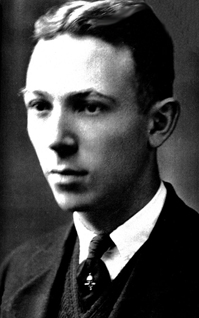
A great American essayist and literary stylist wrote a book for children, and a deluge of scornful criticisms followed. Was the book offensive? Would it cause children to rebel against parental authority? Apparently not, but E.B. White’s first work of fiction for children, Stuart Little, was greeted with more acrimony than was the fictional mouse-child himself when his dubious parents first faced the unexpected strangeness of their progeny. Mr. and Mrs. Little rose to the occasion, but the same cannot be said for many of Mr. White’s contemporaries.
The book is unusual in many respects. For one thing, it is written as a series of episodes. The entire collection of episodes does not have the kind of story arc that is normally expected of a book marketed as a novel. But the most unusual aspect is the physical appearance of the hero. E.B. White offers no explanation as to how or why the Little’s second child happens to have the form and size of a mouse. We are never directly told that Stuart Little is a mouse, merely that “. . . the baby looked very much like a mouse in every way.” But Stuart Little has an admirable character and a loving family who look past what others might see as a handicap; for this reason he is able to live a full and adventurous life. The appeal of Stuart Little, both as a character and as a story, is not difficult to comprehend. What is difficult to comprehend, especially now that the book has been in print for more than sixty years, is why it was not received with open arms by those firmly acquainted with the author’s high degree of literary skill.
In The New York Times on October 28, 1945, Malcolm Cowley reviewed Stuart Little and left no doubt that he was pleased with some aspects of the book, but disappointed overall. Cowley pointed out the same aspects of the book noted in the previous paragraph, the same qualities that have been criticized with each new generation following the book’s publication. He mentioned E.B. White’s amiability, both in person and in his writing, as if to dispel any notion that he was biased in his dislike of the novel.
The most disconcerting criticisms came from closer quarters than The New York Times. The formidable head of The New York Public Library’s children’s division, Anne Carroll Moore, hounded White as he completed the story he had been working on at intervals over several years. Moore was not only a children’s librarian, she was one of the earliest critics of literary works for children, and, as she headed into retirement and into relative obscurity after a long career, she was determined to be known as one of the discoverers of the already famous essayist’s children’s novel. She not only nagged him to finish the manuscript, she also demanded to view the galleys once he did. The result was not what she had expected. Moore declared it to be the product of “a sick mind.” She was joined by The New Yorker founder, Harold Ross, who told White he should have had the Little’s adopt the mouse-child (a change made in the movie version). Edmund Wilson thought the book should be less sweet, more macabre in “the manner of Kafka,” and Anne Carroll Moore’s successor, Frances Clarke Sayers, refused to purchase Stuart Little for The New York Public Library.
Throughout this trial, the ever-poised E.B. White maintained his equanimity and his humor. Stuart Little, as we know, went on to become a classic. It is a near perfect reflection of the charm and dignity of its creator.


4 responses to “Stuart Little’s Quiet Champion”
I wonder what bothered them more – that a great American essayist “stooped” to writing children’s literature or Stuart’s differentness?
Excellent question! I suspect it was a bit of both. White never lets us know what becomes of Stuart after he drives off into the sunset, but the little guy probably faced more of the same brand of prejudice.
I wonder what bothered them more – that a great American essayist “stooped” to writing children’s literature or Stuart’s differentness?
Excellent question! I suspect it was a bit of both. White never lets us know what becomes of Stuart after he drives off into the sunset, but the little guy probably faced more of the same brand of prejudice.